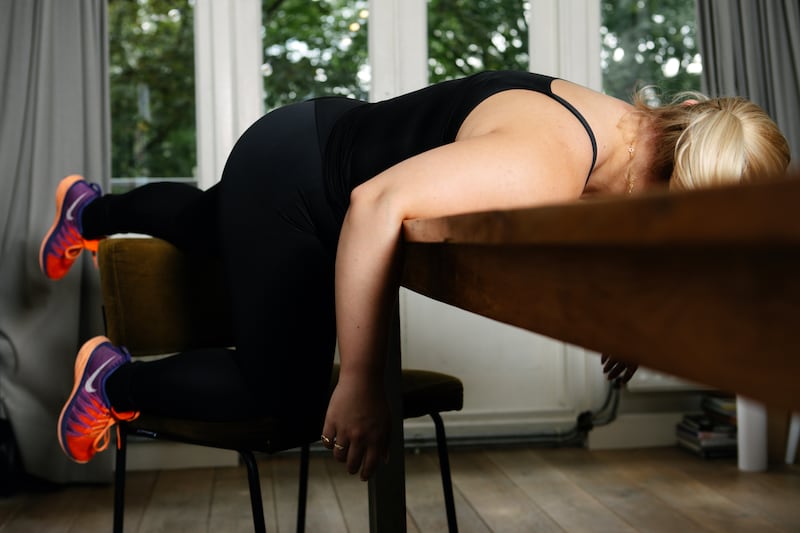Keeping fit requires consistency, motivation and discipline – establishing a routine and sticking with it. But building fitness also involves regularly breaking that routine and getting enough rest. Choosing when not to work out can be as important as the exercise itself.

“Recovery is part of the process,” says Justin Santos, a head coach at the Academy of Lions, a fitness club in Toronto. “Neglecting rest is just as bad as skipping out on a month’s worth of training.”
Getting fit is a cycle of fatigue and repair. And as we adapt, our bodies become stronger, faster and more powerful.
For the average gym-goer, it can be difficult to know exactly how much rest is right. What constitutes a proper rest day?
RM Block
Are you resting too little or too much?
Exercise causes microscopic tears in our muscle fibres, and as we rest, those fibres are repaired, adapting to become bigger and stronger. This process of adaptation, called super-compensation, is what allows us to run faster, jump higher or lift more weight.
“It’s during the fatigue phase, as the body recovers, that we adapt to the training,” says Giles Warrington, a professor of human performance and innovation at the University of Limerick.
Without adequate rest, the muscles don’t have time to adapt, stalling progress and preventing improvement. But not all fatigue is the same, and neither is all recovery.
For aerobic exercise, such as running or using a skipping rope, “the adaptations are relatively rapid” and could happen overnight, says Warrington. After a light jog, your body will probably be ready for another run the following morning.
For more powerful or explosive power training, “the process of recovery is longer,” and may require a day or two. “Generally speaking, you wouldn’t want to do consecutive days of strength training,” he says.
That said, you don’t need to wait until you’re 100 per cent recovered to work out again, says Santos, especially if you are training toward a goal, such as running a marathon. Some smartwatches and wearables that track the quality of your sleep can score your readiness level, though accuracy varies.
[ How holding still can reduce your blood pressurOpens in new window ]
If you’re just exercising to keep up with the children or age gracefully, he recommends staying at what feels like 80 per cent – where you might feel your previous workout a little, but it doesn’t affect performance. If you’re training for a race or to climb a mountain, he recommends working through some soreness to push your body to improve more quickly. If you want to, say, run a faster 10km, shorter recovery times are better.
If you are exercising three or fewer times per week, you likely don’t need more rest days – you may actually need to work out more often. Try to implement other forms of physical activity into your routine, whether that’s playing a game of frisbee or taking a brisk hike, says Scott Panchik, a former CrossFit Games athlete who now runs a gym. “If you want to get better at something, you need to be getting four or five days in.”
Your rest days should not be completely sedentary. “Recovery doesn’t mean doing absolutely nothing,” says Warrington. Active recovery, which includes low-impact cardio, such as a light jog, long walk or a game like pickleball, has been shown to be very effective at promoting recovery.

Panchik says his recipe is three days on, one day off, followed by two days on, one day off (then repeat). On his days off, he goes for long walks or does light cardio. “I’ve tried resting less,” he says “and it leads to overtraining and to injury”.
Another way to tell if you need more rest days is your overall disposition.
“Mood seems to be the most reliable marker of overtraining,” says Christie Aschwanden, author of Good to Go: What the Athlete in All of Us Can Learn from the Strange Science of Recovery.
If you wake up feeling irritable or cranky, or if you suddenly find yourself reluctant to do a form of exercise you ordinarily love, it’s probably time for a day off.
For people who love working out, it can be tough to take a break. “Rest can be really hard for some people,” says Arielle Loewen, a professional CrossFit athlete. “It can be hard to feel like you’re doing enough. It takes a lot of patience.”
[ Why you should be doing push-ups, and how to master themOpens in new window ]
Forcing yourself to take a rest day is critical to sustaining a long-term exercise habit. “If you don’t take a rest day,” says Loewen, “your body will force you to take one”.
Last, it’s important to get to bed early enough before and after training. “Sleep is probably the most powerful tool in our recovery tool kit,” says Warrington. – This article originally appeared in the New York Times
- Sign up for push alerts and have the best news, analysis and comment delivered directly to your phone
- Join The Irish Times on WhatsApp and stay up to date
- Listen to our Inside Politics podcast for the best political chat and analysis











